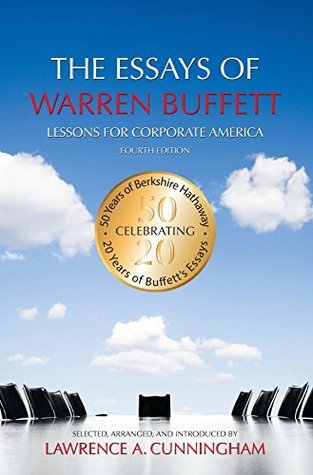More on this book
Community
Kindle Notes & Highlights
Read between
November 28 - November 28, 2017
“As time goes on, I get more and more convinced that the right method in investment is to put fairly large sums into enterprises which one thinks one knows something about and in the management of which one thoroughly believes.
He can be hurt by such volatility only if he is forced, by either financial or psychological pressures, to sell at untoward times.
In making both control purchases and stock purchases, we try to buy not only good businesses, but ones run by high-grade, talented and likeable managers.
Their inadequacy is not surprising. Most bosses rise to the top because they have excelled in an area such as marketing, production, engineering, administration—or, sometimes, institutional politics.
The second advantage of a controlled company over a marketable security has to do with taxes.
We want the business to be one (a) that we can understand; (b) with favorable long-term prospects; (c) operated by honest and competent people; and (d) available at a very attractive price.”
Consciously paying more for a stock than its calculated value—in the hope that it can soon be sold for a still-higher price—should be labeled speculation (which is neither illegal, immoral nor—in our view—financially fattening).
not, the term “value investing” is widely used. Typically, it connotes the purchase of stocks having attributes such as a low ratio of price to book value, a low price-earnings ratio, or a high dividend yield. Unfortunately, such characteristics, even if they appear in combination, are far from determinative as to whether an investor is indeed buying something for what it is worth and is therefore truly operating on the principle of obtaining value in his investments. Correspondingly, opposite characteristics—a high ratio of price to book value, a high price-earnings ratio, and a low dividend
...more
Williams set forth the equation for value, which we condense here: The value of any stock, bond or business today is determined by the cash inflows and outflows—discounted at an appropriate interest
I've been on record for many years about the management of Cap Cities: I think it is the best of any publicly-owned company in the country.
In our view, though, investment students need only two well-taught courses—How to Value a Business, and How to Think About Market Prices.
stock. You must also resist the temptation to stray from your guidelines: If you aren't willing to own a stock for ten years, don't even think about owning it for ten minutes.
them. Instead, we just stick with what we understand. If we stray, we will have done so inadvertently, not because we got restless and substituted hope for rationality. Fortunately, it's almost certain there will be opportunities from time to time for Berkshire to do well within the circle we've staked out.
Time is the friend of the wonderful business, the enemy of the mediocre.
Leverage, of course, can be lethal to businesses as well. Companies with large debts often assume that these obligations can be refinanced as they mature.
being so cautious in respect to leverage, we penalize our returns by a minor amount. Having loads of liquidity, though, lets us sleep well. Moreover, during the episodes of financial chaos that occasionally erupt in our economy, we will be equipped both financially and emotionally to play offense while others scramble for survival. That's what allowed us to invest $15.6 billion in 25 days of panic following the Lehman bankruptcy in 2008.


